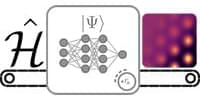Circa 2014 face_with_colon_three
Researchers spar over the meaning of findings and the precise timing of doomsday clock.


The ultraviolet nail polish drying devices used to cure gel manicures may pose more of a public health concern than previously thought. Researchers at the University of California San Diego studied these ultraviolet (UV) light emitting devices, and found that their use leads to cell death and cancer-causing mutations in human cells.
The devices are a common fixture in nail salons, and generally use a particular spectrum of UV light (340-395nm) to cure the chemicals used in gel manicures. While tanning beds use a different spectrum of UV light (280-400nm) that studies have conclusively proven to be carcinogenic, the spectrum used in the nail dryers has not been well studied.
“If you look at the way these devices are presented, they are marketed as safe, with nothing to be concerned about,” said Ludmil Alexandrov, a professor of bioengineering as well as cellular and molecular medicine at UC San Diego, and corresponding author of the study published Jan. 17 in Nature Communications. “But to the best of our knowledge, no one has actually studied these devices and how they affect human cells at the molecular and cellular levels until now.”

Exponential progress can be expected in the decades ahead, if all goes according to plan. […] Combined with emission reductions, and natural methods such as forest restoration, it could finally begin reversing the centuries-long build-up of CO2, which is today approaching a cumulative total of nearly 2,000 GtCO2 since the Industrial Revolution.
The first comprehensive, global assessment of carbon dioxide removal (CDR) – including both current developments and projected future trends – has been published this week by Oxford University.
The detailed analysis finds that natural methods (such as tree and soil restoration) will need to double, while new technologies such as direct air capture need a 1,300-fold capacity increase by 2050.
This segment originally aired on January 20, 2023.
Yahoo Finance Live anchors Seana Smith and Dave Briggs look at Boston Dynamic’s new “Atlas” robot, showcasing its mobility, strength, and agility in a simulated work zone.
Don’t Miss: Valley of Hype: The culture that built Elizabeth Holmes.
WATCH HERE:
About Yahoo Finance:
At Yahoo Finance, you get free stock quotes, up-to-date news, portfolio management resources, international market data, social interaction and mortgage rates that help you manage your financial life.
Yahoo Finance Plus: With a subscription to Yahoo Finance Plus get the tools you need to invest with confidence. Discover new opportunities with expert research and investment ideas backed by technical and fundamental analysis. Optimize your trades with advanced portfolio insights, fundamental analysis, enhanced charting, and more.
To learn more about Yahoo Finance Plus please visit: https://yhoo.it/33jXYBp.
Connect with Yahoo Finance:
Get the latest news: https://yhoo.it/2fGu5Bb.
Find Yahoo Finance on Facebook: http://bit.ly/2A9u5Zq.
Follow Yahoo Finance on Twitter: http://bit.ly/2LMgloP
Follow Yahoo Finance on Instagram: http://bit.ly/2LOpNYz.
Follow Yahoo Finance Premium on Twitter: https://bit.ly/3hhcnmV


An overview of hints and expecations about GPT-4 and what the OpenAI CEO recently said about it.


The new image reveals thin tendrils and clumpy clouds associated with hydrogen gas filling the space between the stars. We can see sites where new stars are forming, as well as supernova remnants.
In just this small patch, only about 1 percent of the whole Milky Way, we have discovered more than 20 new possible supernova remnants where only 7 were previously known.
These discoveries were led by PhD student Brianna Ball from Canada’s University of Alberta, working with her supervisor, Roland Kothes of the National Research Council of Canada, who prepared the image. These new discoveries suggest we are close to accounting for the missing remnants.

The approval was granted by the Singapore Food Agency, and means Good Meat is allowed to use synthetic processes to create its products.
Cultured meat is grown from animal cells and is biologically the same as meat that comes from an animal. The process starts with harvesting muscle cells from an animal, then feeding those cells a mixture of nutrients and naturally-occurring growth factors (or, as Good Meat’s process specifies, amino acids, fats, and vitamins) so that they multiply, differentiate, then grow to form muscle tissue, in much the same way muscle grows inside animals’ bodies.
Usually, getting animal cells to duplicate requires serum. One of the more common is fetal bovine serum, which is made from the blood of fetuses extracted from cows during slaughter. It sounds a bit brutal even for the non-squeamish carnivore. Figuring out how to replicate the serum’s effects with synthetic ingredients has been one of the biggest hurdles to making cultured meat viable.